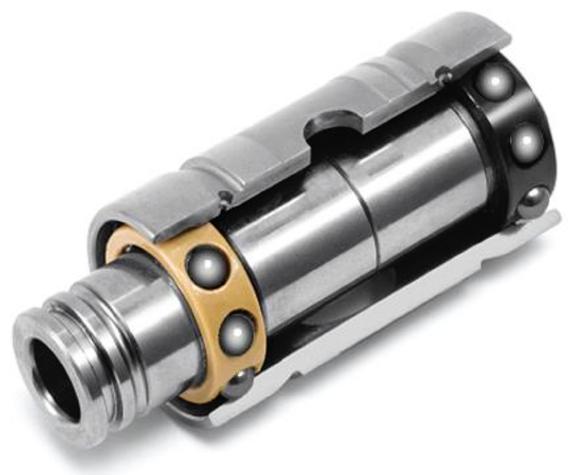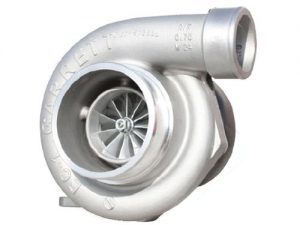The Basic Principles Of Turbochargers
Table of ContentsTurbochargers for DummiesHow Turbochargers can Save You Time, Stress, and Money.Examine This Report on TurbochargersSome Known Factual Statements About Turbochargers
The size of the piping alone is a serious concern; American fighters Vought F4U and Republic P-47 used the exact same engine, however the big barrel-like fuselage of the latter was, in part, needed to hold the piping to and from the turbocharger in the rear of the plane. Turbocharged piston engines are also subject to a lot of the exact same operating constraints as gas turbine engines.
The excellent majority of The second world war American heavy bombers utilized by the USAAF, particularly the Wright R-1820 Cyclone-9 powered B-17 Flying Fortress, and Pratt & Whitney R-1830 Twin Wasp powered Consolidated B-24 Liberator four-engine bombers both utilized comparable designs of General Electric- developed turbochargers in service, as did the twin Allison V-1710- engined Lockheed P-38 Lightning American fighter throughout the war years.
Turbocharged airplane typically inhabit an efficiency range between that of generally aspirated piston-powered airplane and turbine-powered airplane. Regardless of the unfavorable points, turbocharged airplane fly higher for greater performance. High cruise flight also enables more time to assess issues before a forced landing should be made. As the turbocharged airplane climbs, however, the pilot (or automated system) can close the wastegate, requiring more exhaust gas through the turbocharger turbine, therefore keeping manifold pressure during the climb, at least up until the critical pressure altitude is reached (when the wastegate is completely closed), after which manifold pressure falls.


This permits flying "above the weather condition" - turbochargers. In manually controlled wastegate systems, the pilot must make sure not to overboost the engine, which triggers detonation, resulting in engine damage. A medium-sized six-cylinder marine diesel-engine, with turbocharger and exhaust in the foreground Turbocharging, which prevails on diesel engines in cars, trucks, tractors, and boats is likewise typical in heavy equipment such as locomotives, ships, and auxiliary power generation.
The Of Turbochargers
diesel engines have no detonation because diesel fuel is injected at or towards completion of the compression stroke and is ignited solely by the heat of compression of the charge air. Since of this, diesel motors can utilize a much greater boost pressure than spark ignition engines, limited just by the engine's ability to endure the additional heat and pressure.
In this particular application, primarily Electro-Motive Diesel (EMD) 567, 645, and 710 Series engines, the turbocharger is initially driven by the engine's crankshaft through a gear train and an overrunning clutch, thereby supplying goal for combustion. After combustion has actually been achieved, and after the exhaust gases have actually reached enough heat energy, the overrunning clutch is immediately disengaged, and the turbo-compressor is thereafter driven exclusively by the exhaust gases.
This is particularly useful at high elevations, as are often experienced on western U.S. railroads. It is possible for the turbocharger to revert to compressor mode for a little while during commands for large boosts in engine power. Garrett Motion (previously Honeywell Turbo Technologies), BorgWarner and Mitsubishi Turbocharger are the largest manufacturers in Europe and the United States.
Increasing oil rates and a customer focus on fuel effectiveness. Only 10 percent of light cars offered in the United States are geared up with turbochargers, making the United States an emerging market, compared to half of cars in Europe that are turbocharged diesel and 27 percent that are petrol improved.
In 2017, 27% of lorries sold in the US were turbocharged. learn this here now In Europe 67% of all vehicles were turbocharged in 2014, and were expected to grow to 69% by 2019. Historically, more than 90% of turbochargers were diesel, however, adoption in gas engines is increasing. The U.S. Coalition for Advanced Diesel Cars is promoting a technology neutral policy for federal government subsidies of environmentally friendly automobile technology.
More About Turbochargers
Political shifts could drastically alter adoption forecasts. Turbocharger sales in the United States increased when the federal government boosted corporate average fuel economy targets to 35. 5 mpg by 2016. Turbocharger failures and resultant high exhaust temperatures are amongst the reasons for vehicle fires. Nice, Karim (4 December 2000). " How best site Turbochargers Work".
howstuffworks.com. Recovered 1 June 2012. Archived 26 March 2011 at the Wayback Maker " History of the Supercharger". Retrieved 30 June 2011. " The turbocharger turns 100 years old today". www. newatlas.com. 18 November 2005. Recovered 20 September 2019. Porsche Turbo: The Full History. Peter Vann. MotorBooks International, 11 July 2004 Miller, Jay K (turbochargers).
CarTech Inc. p. 9. ISBN 9781932494297. Retrieved 20 September 2019. "Verbrennungskraftmaschinenanlage" " Alfred Bchi the creator of the turbocharger - page 1". www. ae-plus. com. Archived from the initial on 5 April 2015. " Turbocharger History". www. cummins.ru. Obtained 20 September 2019. " Hill Climb up". Air & Area Publication. Recovered 2 August 2010.
www. ae-plus. com. Archived from the original on 29 September 2017. Compressor Performance: Aerodynamics for the User. M. Theodore Gresh. Newnes, 29 March 2001 Diesel and gas turbine progress, Volume 26. Diesel Engines, 1960 " World War II - General Electric Turbosupercharges". aviationshoppe. com. " History". www. bwauto.com. Retrieved 20 September 2019.
Automobile. howstuffworks.com. 1 April 2000. Obtained 1 June 2012. " supercharging". Elsberg-tuning. dk. Recovered 1 June 2012. Chris Longhurst. " The Fuel and Engine Bible: page 5 of Recommended Site 6". Automobile Bibles. Retrieved 1 June 2012. " How to twincharge an engine". Torquecars. com. Recovered 1 June 2012. " 4 Stroke Engine Essential". Compgoparts. com.
Little Known Facts About Turbochargers.
Brain, Marshall (5 April 2000). " HowStuffWorks "Internal Combustion"". Howstuffworks. com. Obtained 1 June 2012. " Volumetric Effectiveness (and the REAL element: mass air flow)". Epi-eng. com. 18 November 2011. Obtained 1 June 2012. " Variable-Geometry Turbochargers". Large. stanford.edu. 24 October 2010. Retrieved 1 June 2012. " How Turbo Chargers Work" (turbochargers). Conceptengine. tripod.com. Recovered 1 June 2012.